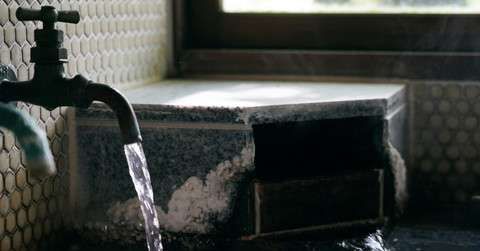
Understanding the Hidden Impact of Water Damage in City Apartments
New York City is the hub of classy apartments and beautiful urban buildings. The other reality of the city is water damage silently attacking the property's health. From burst pipes in modern studio apartments to leaky roofs in ancient buildings, even the slightest water damage can lead to severe hidden damage.
These include mold growth and structural weakening, which pose long-term health hazards. It is essential to understand these unseen impacts, especially for the residents who stay in shared spaces. This is what this article is all about.
· Water damage and its complicated reality
Typically, few people in NYC apartments can detect water damage until it has occurred to an extreme extent. Based on the dense setting of the city, it is possible for moisture to walk in through the ceilings, walls, and floors and spread away from the source. Some of the old buildings in NYC have outdated waterproofing and aging plumbing systems, which maximize the scope of hidden leaks. The seasonal temperature changes, ranging from icy cold winters to humid summers, add stress to the pipe and allied structures. Therefore, water intrusion is a constant issue for landlords and tenants.
· The real impact is mostly unseen
The phrase 'water damage NYC' has more implications than a mere maintenance issue. It is a complicated challenge that impacts indoor health and property safety. If there is moisture behind the walls of your house, it can affect insulation, drywall, and electrical wiring. Naturally, it leads to security hassles and expensive repairs in the days to come. The mold spores also thrive in dark and damp spaces and can spread widely via the HVAC systems. It can worsen respiratory conditions and allergies. When you actually notice the signs for real, ample damage has already occurred, and now needs professional expertise to resolve.
· How can water damage hamper building integrity?
If there is hidden water damage in your building, it can gradually erode your apartment. Wooden framing soaks up the water and starts to lose strength. On the other hand, the metal components usually corrode over time. In a multi-unit complex, the plumbing systems and shared walls can enable water to move between apartments, making a minor leak in a unit into a serious building issue. This can weaken the ceilings and load-bearing walls, potentially affecting the residents' safety. Therefore, prompt maintenance and timely inspections are crucial to avoid such structural aggravation. To learn more about this, you can consult a home restoration company and make a better decision.
Finally, it is essential to detect issues early so that you can prevent any major mishaps that may result in expensive replacements. The residents need to check for very subtle warning signs, such as a constant foul smell, bubbling paint, and increased humidity levels. When you install moisture detectors beside washing machines, bathrooms, and sinks, you can quickly detect leaks. Property owners should ensure there is routine plumbing maintenance and correct waterproofing.
Final words
Water damage and its negative impacts are not always visible on the surface. This is even true for the houses and apartments in New York City. Some of the hidden effects include structural decay and health risks. If you don't address this fast, it can worsen your living conditions. Therefore, residents in New York City should prioritize preventive care and exercise caution to ensure their homes are safe and secure.
